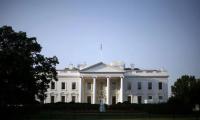In November, the possibility of two major archaeological discoveries was announced, but they are likely to have very different impacts.
In Mexico, a tunnel has been found under the Great Temple of Tenochtitlan, in the heart of Mexico City. The tunnel contained the decapitated heads of two children, but what is exciting for Aztec specialists is the discovery of two sealed chambers at the end of the tunnel.
The archaeologist leading the dig believes that the chambers will contain the incinerated remains of some of the great Aztec rulers, including Moctezuma I.
But for all the excitement surrounding the Mexican announcement, and how much it helps advance Aztec research, it is the news from Egypt that is grabbing headlines, as archaeologists take steps to prove that there is more than meets the eye in the Tomb of Tutankhamun in Luxor’s Valley of the Kings.
The possibility of there being at least one more chamber in the young king’s tomb was first raised in August by Nicholas Reeves, the British Egyptologist. Reeves had been studying the results of scans of the tomb made by Madrid-based Factum Arte - an art and preservation organisation - which had completed the most extensive scan of the ancient surfaces while creating a replica of the burial chamber.
Looking at a set of black and white scans, Reeves noticed that one wall of the chamber had traces of what might be two hidden doorways and he published an academic paper with his findings.
On October 1, when Mamduh al-Damati, Egypt’s minister of antiquities, announced a 70 percent chance of there being something hidden in the tomb, the news exploded around the world. Although Damati was cautious in his initial assessment, he has taken a prominent role in the story.
In Egypt, archaeology and tourism are intimately connected and in some ways, the economy is maintained by the pharaoh’s gold standard. Hashim Zaazou, the Minister of Tourism in Egypt, was first appointed in 2012, during the Muslim Brotherhood presidency of Mohamed Morsi. He has survived several governments and a string of crises - the latest being the fallout from the downing of a Russian passenger plane flying out of the Red Sea resort of Sharm el-Sheikh.
In most other countries, you might be forgiven for wondering what possible link there might be between an archaeological discovery and the national economy: The discovery of British King Richard III’s remains beneath a car park in Leicester was spectacular, but it didn’t affect the value of the British pound.
In Egypt, however, archaeology and tourism are intimately connected and in some ways, the economy is maintained by the pharaoh’s gold standard. Egypt has two great tourism assets: its hundreds of miles of Red Sea beaches and the great monuments from its long history.
Beach tourism took on greater significance after the Islamist trouble along the Nile in the 1990s: the creation of the Red Sea Riviera label helped separate the coast from what was happening inland, and resorts such as Hurghada and Sharm el-Sheikh flourished. Which is why, with much of Sinai out of bounds and with Sharm el-Sheikh now suffering after the Russian jet crash, Nile tourism has taken on even greater importance. But years of revolution and civil unrest has taken its toll and last month - which should have been the beginning of high season in Luxor and the south - most hotels had low occupancy and the majority of the 300 Nile cruisers were tied up. In the south, where the majority of people are involved in tourism, this represents millions of personal calamities.
Although a string of recent discoveries in Egypt has failed to catch our interest, Zaazou is hoping that a major discovery in Luxor, involving Egypt’s great asset, Tutankhamun, will encourage us back to the temples and tombs - and in that he might be right.
The opening of Tutankhamun’s tomb in 1923, and the subsequent drip of sensational discoveries - helped by a series of odd deaths ascribed to a mummy’s curse - was the greatest of all and has made Egypt somewhere we all want to visit at least once in our lives.
The tour of Tutankhamun’s treasures to Europe and the United States in the 1970s, which drew thousands to the British Museum and elsewhere, created another surge in Nile tourism.
The near certainty that there might be another chamber in the treasure-packed tomb and the speculation, already rife, of the wonders it might contain - including the remains of the great beauty Nefertiti - will only help.
And just now, as anyone who has been in the south of Egypt recently will know, help is needed.
This article has been excerpted from: ‘Egypt’s gold standard: Tourism’.
Courtesy: Aljazeera.com.
What Washington needs to register is that terrorism is threat not only to Pakistan but also to US and its allies
Global superpowers are weaponising blockchain to assert financial dominance
Pakistan is simultaneously experiencing too much water and too little water
Eminent educationist Baela Raza Jamil launched initiative in Lahore at conference in February 2006
Pakistan has risen to second place in Global Terrorism Index 2025, based on number of deaths in terrorist attacks...
They are waiting for world where they can work without fear and walk without danger







